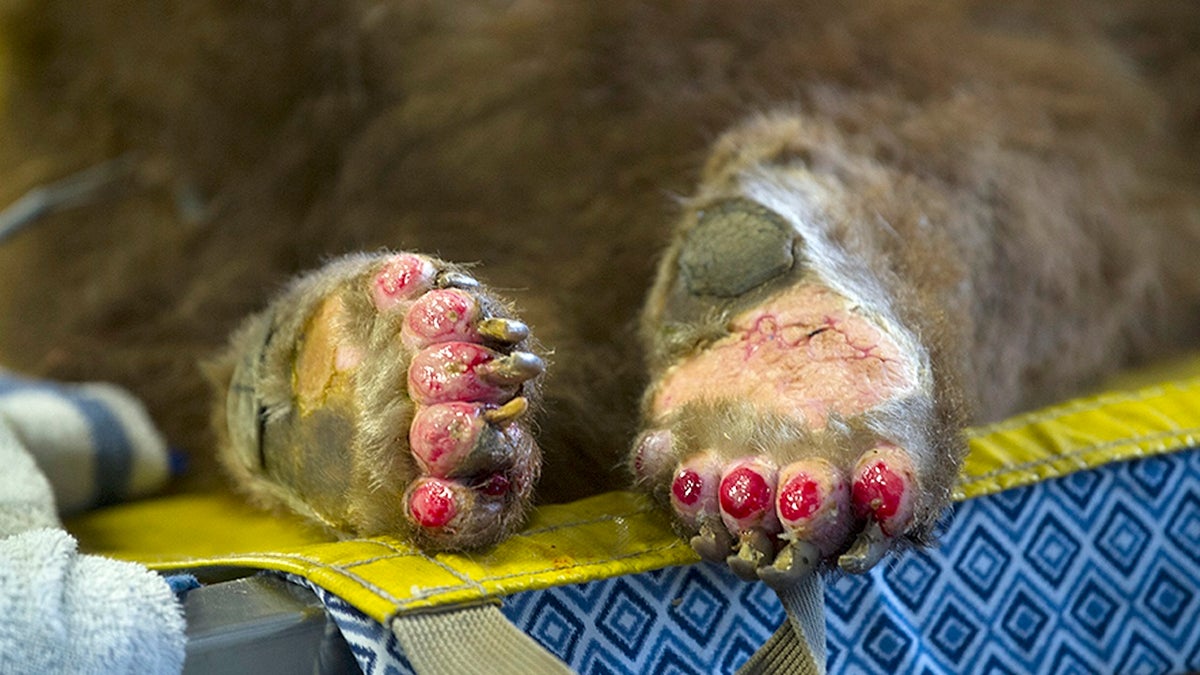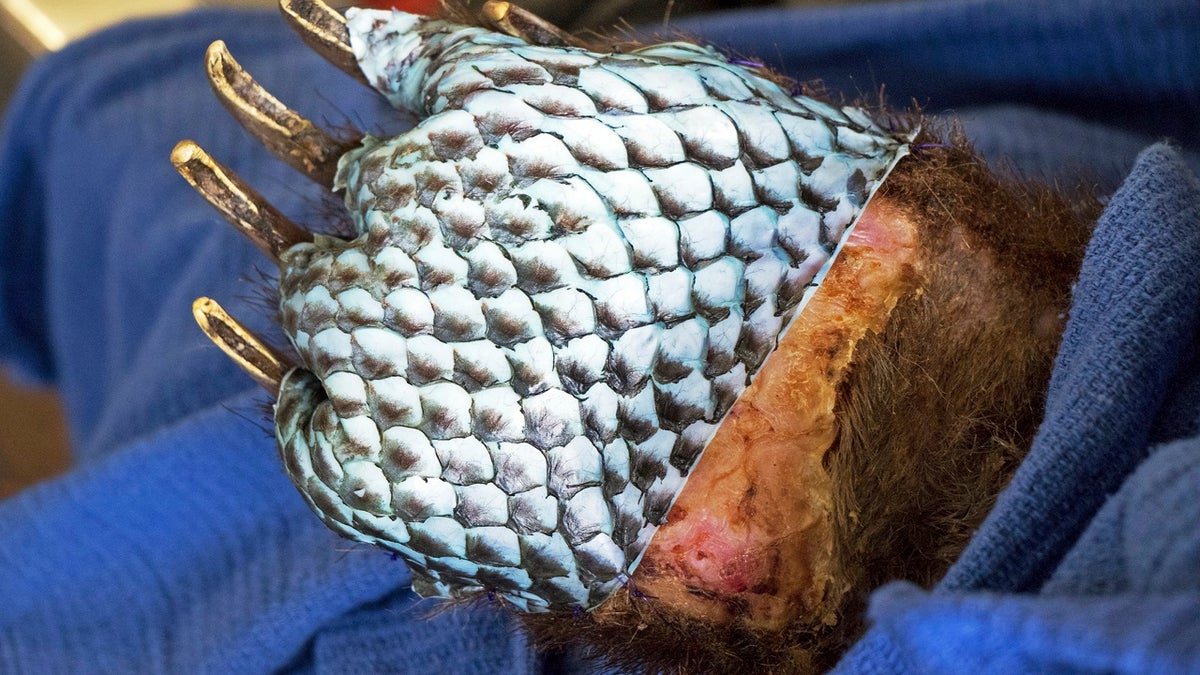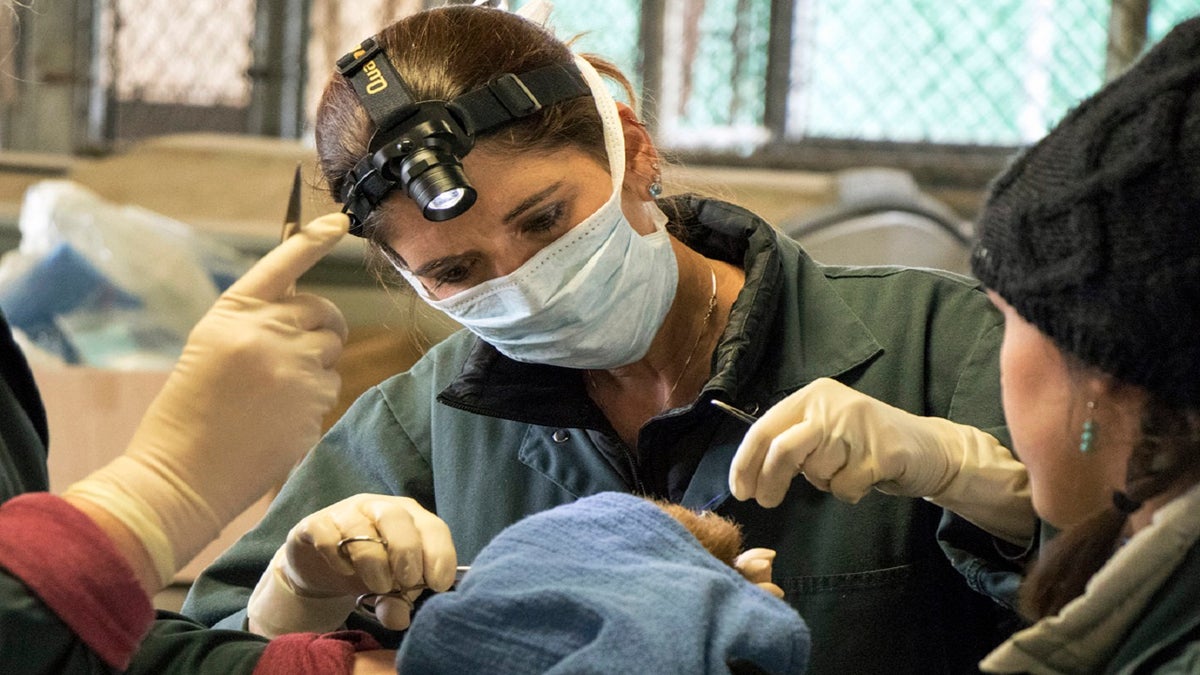Bears burned in California wildfires treated with fish skins
Rescuers brought two adult bears, a cub and a young mountain lion to veterinarians with the state Department of Fish and Wildlife and the University of California, Davis. Veterinarians used acupuncture, fish skins and other alternative medical treatments to help wild animals recover from the burns.
Life in the wild can be cruel. But there are always people working to heal nature's damage.
After Southern California's recent wildfires, veterinarians used acupuncture, fish skins, and other alternative medical treatments to help wild animals recover from burns, vets said Wednesday.
Rescuers brought two adult bears, a cub, and a young mountain lion to veterinarians with the state Department of Fish and Wildlife and the University of California, Davis.
In the largest wildfire in state history, the burned animals were found in the Los Padres National Forest, where its mountains were severely scorched through Santa Barbara and Ventura counties.
Jamie Peyton, chief of the Integrative Medicine Service at the university's vet school, said standard pain treatment is challenging for wild animals and caregivers because of the wildlife’s sharp teeth and claws. For safety reasons, vets have to heavily sedate the animals every time they change their bandages or care for them.
"You can only anesthetize them so many times," Peyton said. "It's hard on them. We can't do that to them every day."
She also said putting pain pills in food is a problem, because the animals may not eat them.

The badly burned paws of one of two bears being treated by Dr. Laura Peyton at the University of California, Davis, Veterinary Medical Teaching Hospital at the California Department of Fish and Wildlife in Davis, Calif. (UC Davis via Associated Press)
The bears had suffered third-degree burns on all their paws, and the cub also burned all four paws.
Finally, Peyton and her colleagues decided to employ alternative methods: acupuncture, chiropractic treatment, cold-laser therapy and even fish skins.

The badly burned paw of a bear, injured in a wildfire, wrapped in fish skin - tilapia - during treatment at the University of California, Davis Veterinary Medical Teaching Hospital in Davis, Calif. (California Department of Fish and Wildlife)
So far, the fish skins seem to be the most helpful form of treatment for the bears, vets said.
"We made little spring rolls with their feet," Peyton said.

Veterinarian Dr. Laura Peyton, chief of integrated medicine at the University of California, Davis Veterinary Medical Teaching Hospital, works on the badly burned paw of a bear, injured in a wildfires, in Davis, Calif. (California Department of Fish and Wildlife)
The California vets stitched the fish skins to the animals' burned paws, then wrapped the treated feet with bandages of rice paper and corn husks.
Animals often eat ordinary cloth bandages, which can block their intestines. This was the case with the 5-month-old mountain lion, who kept eating his fish-skin and corn-husk bandages.
Peyton recalls the improvement she’s seen with the treatment. She said one of the bears at first laid down continuously to spare her burned paws, not wanting to stand or walk at all.
"After the first time we put the bandages on, she woke up, she stood up," and showed interest in her surroundings, she said.
After weeks of treatment, wildlife officials released the bears back into the Los Padres National Forest last week. They plan to release the cub this week.
The positive results urge for more trials of the fish skins for burns, the vets said.
The Associated Press contributed to this report.


